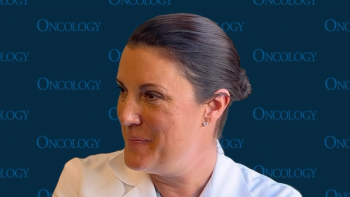
Lifestyles Factors May Contribute to Increased Early-Onset Cancer Incidence
Rates of obesity appear to correlate with increasing incidence of cancer in young populations, according to Monique Gary, DO, MSc, FACS.
In a conversation with CancerNetwork®, Monique Gary, DO, MSc, FACS, discussed how certain lifestyle factors including smoking, obesity status, and physical activity may be associated with a rise in early-onset cancer, including in breast and gastrointestinal (GI) disease.
According to Gary, a breast surgeon and medical director at Grand View Health, findings from a study published in JAMA Network Open highlighted an increase in incidence of early-onset cancer from 2010 to 2019, including those with GI cancers. Although she indicated that there were no definitive conclusions that could be drawn from the study, Gary said that rates of obesity appeared to parallel the rising incidence of early-onset disease during this period. Based on this correlation, she suggested that increases in weight may account for the increasing rate of cancer incidence.
Transcript:
There are no definitive explanations that came out of this study. This was a study that was population-wide and designed to look at a cross-section of where we are and see where there might be some leads. There were some interesting associations with things like smoking, obesity, and physical activity. When you look at the number of gastrointestinal cancers, for example, that have increased, those are all going to be related to those risk factors [seen in] sedentary lifestyles. There are some opportunities for us to do some interventions on that population’s health and wellness because much of what we’re seeing has a lot to do with what’s been happening to us as a society.
What I mean by that is, when you look at even the rates of obesity, they’re mirroring the rates of increase in cancer in young people. We know that younger people are struggling with their weight. Those increases are probably going to—at least we believe in the scientific community—result in some increased cancer incidence and may be part of the phenomenon that we’re experiencing.
Reference
Koh B, Hao Tan DJ, Ng HN, et al. Patterns in cancer incidence among people younger than 50 years in the US, 2010 to 2019. JAMA Netw Open. 2023;6(8):e2328171. doi:10.1001/jamanetworkopen.2023.28171
Newsletter
Stay up to date on recent advances in the multidisciplinary approach to cancer.

















































































